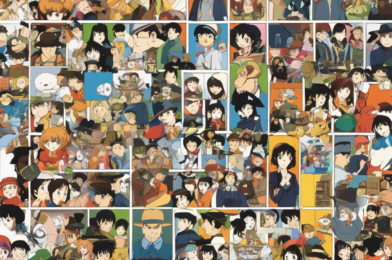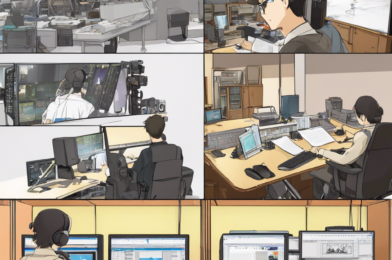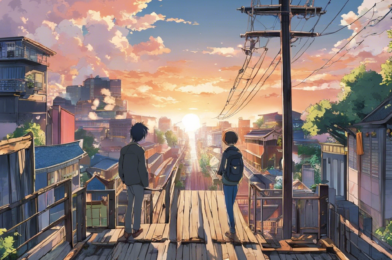I still vividly remember the first time I encountered anime as a child. The vibrant colors, exaggerated expressions, and dynamic action sequences captivated me instantly. Little did I know then how profoundly Japanese animation would influence the world of Western cartoons and animated films.
In this article, I’ll explore the remarkable impact of anime on Western animation, delving into its cultural significance, artistic influences, and enduring legacy. Through personal anecdotes and insights from my global travels, I’ll guide you on a journey that transcends boundaries, celebrating the power of storytelling and the universal language of animation.
The Cultural Phenomenon
As an avid traveler, I’ve witnessed firsthand how anime has become a global phenomenon, transcending its Japanese origins. From the bustling streets of Tokyo to the comic conventions of San Diego, the influence of this art form is undeniable.
– Embrace the diversity: Anime has introduced Western audiences to a rich tapestry of narratives, exploring themes that resonate across cultures.
– Appreciate the attention to detail: The meticulous craftsmanship and attention to detail in anime have raised the bar for animation worldwide.
– Immerse yourself in the fandom: Attending anime conventions or joining online communities can be a gateway to discovering new worlds and connecting with fellow enthusiasts.
Artistic Inspirations
Anime has inspired countless Western animators and artists, sparking a creative renaissance in the industry. Its unique visual style, character design, and storytelling techniques have left an indelible mark on modern animation.
– Study the masters: Exploring the works of legendary anime directors and studios can provide invaluable insights into the art form’s evolution.
– Experiment with techniques: From the dynamic camera angles to the exaggerated expressions, incorporating anime techniques can add depth and emotion to your own creations.
– Embrace the unconventional: Anime’s willingness to push boundaries and explore unconventional narratives has encouraged Western animators to think outside the box.
Crossover Collaborations
In recent years, we’ve witnessed a surge of collaborations between Western and Japanese animation studios, resulting in captivating projects that blend the best of both worlds.
– Seek out collaborations: Keep an eye out for co-productions and crossover projects that fuse Western and anime styles, offering a unique viewing experience.
– Appreciate the fusion: These collaborations often showcase the strengths of both animation traditions, creating a harmonious blend of storytelling and visuals.
– Embrace the cultural exchange: Such projects foster cross-cultural understanding and appreciation, bridging the gap between East and West.
Character Design Evolution
Anime’s distinctive character designs have had a profound influence on Western animation, inspiring a shift towards more stylized and expressive characters.
– Study the art of exaggeration: Anime character designs often exaggerate features for emotional impact, a technique that can add depth to Western animations.
– Embrace diversity: Anime’s diverse character designs celebrate a wide range of body types, ethnicities, and personalities, encouraging inclusivity in Western animation.
– Experiment with new styles: Don’t be afraid to break away from traditional Western character designs and explore the boundless possibilities of anime-inspired aesthetics.
Storytelling Techniques
Beyond visual styles, anime has introduced Western audiences to unique storytelling techniques that challenge traditional narrative structures.
– Embrace episodic narratives: Anime’s episodic format, where stories unfold over multiple episodes or seasons, allows for rich character development and complex storylines.
– Explore genre-blending: Anime often blends genres seamlessly, creating unique and captivating narratives that defy traditional boundaries.
– Embrace the unconventional: Anime’s willingness to tackle unconventional themes and narratives has encouraged Western animators to push creative boundaries.
Emotional Resonance
One of anime’s greatest strengths lies in its ability to evoke powerful emotions in viewers, a quality that has resonated with Western audiences and inspired animators alike.
– Connect with characters: Anime’s emphasis on character development and emotional depth creates a profound connection between viewers and the on-screen personalities.
– Explore complex themes: From existential dilemmas to the intricacies of human relationships, anime fearlessly tackles complex themes that resonate universally.
– Embrace vulnerability: Anime’s willingness to explore vulnerable emotions and character flaws has encouraged Western animators to create more nuanced and relatable characters.
Lasting Legacy
As I reflect on my travels and experiences within the animation industry, it’s clear that anime’s impact on Western animation is a lasting one. Its influence continues to shape the art form, inspiring new generations of creators and captivating audiences worldwide.
– Embrace the fusion: The blending of Western and anime styles has given rise to a new era of animation, one that celebrates diversity and pushes creative boundaries.
– Celebrate the art form: Whether you’re a lifelong fan or a newcomer to the world of anime, take the time to appreciate the artistry and storytelling prowess of this remarkable medium.
– Explore the possibilities: As the lines between Eastern and Western animation continue to blur, the possibilities for creative expression and cross-cultural collaboration are endless.
In a world where storytelling transcends borders and cultures, anime’s impact on Western animation serves as a testament to the universal power of art and imagination. Embrace this fusion, celebrate its diversity, and embark on a journey that will inspire and captivate you in ways you never imagined.








